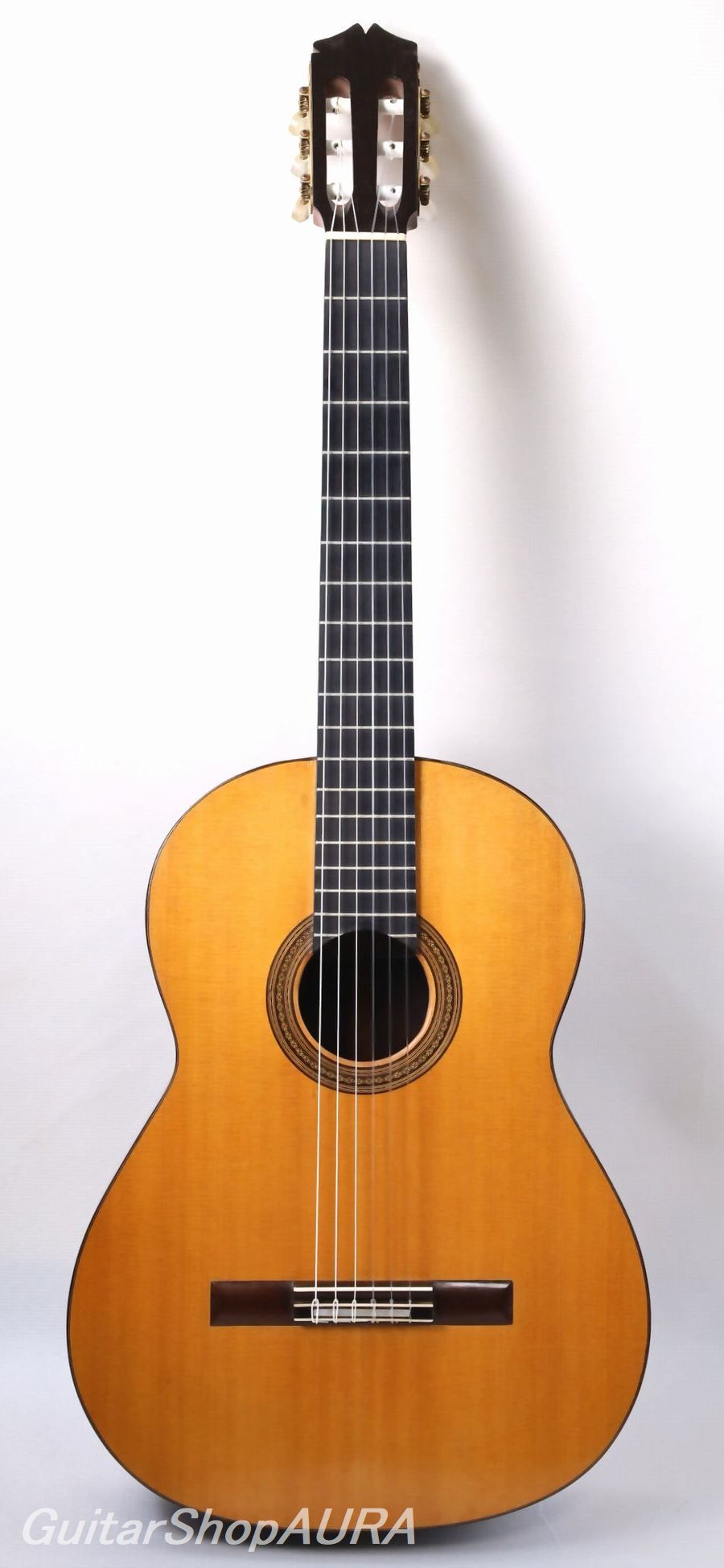
| Instrument | Santos Hernandez |
| Category | Imported Classical Guitars 〔Vintage〕 |
| Number/Model | |
| Scale length | 655mm |
| Country | Spain |
| Year | 1939Year |
| Top | Solid Spruce |
| Side&Back | Solid South American Rosewood |
| Condition※ | 7 |
| List price | INQUIRE |
| Price (tax included) | Please Inquire |
| option |
Click to enlarge the photos below
Neck: Cedro
Fingerboard: Ebony
Finish(Top): Shellac
Finish(Back & Sides): Shellac
Tuning Machines: Fustero
String Height(1st): 3.0mm
String Height(6th): 4.0mm
[Luthier Information]
Santos Hernández Rodríguez (1874–1943) was born in Madrid, Spain. He studied guitar making under Valentín Viudes and Hijo de González, and later joined the workshop of Manuel Ramírez. It is well known that Andrés Segovia made his Madrid debut in 1912 using an instrument crafted by Hernández in Ramírez’s workshop, and continued to perform with it for many years thereafter.
In 1921, following the death of Manuel Ramírez, Hernández established his own workshop on Aduana Street in Madrid. His workshop became a vibrant hub of guitar culture, frequented by many prominent guitarists of the time, including Regino Sainz de la Maza, Celedonio Romero, Ramón Montoya, and Niño Ricardo, who gathered to perform and discuss guitar-making. Thanks to the efforts of José L. Romanillos, this historically significant workshop has now been relocated to a museum in Sigüenza, preserving the atmosphere of that era.
After his death in 1943, Hernández’s legacy was carried on by his disciple Marcelo Barbero, and later by Arcángel Fernández, passing down his highly coveted guitar-making techniques to future generations.
[Instrument Information]
A 1939 classical model by Santos Hernández, made with Brazilian rosewood and in excellent condition, has arrived.
The book 'Santos Hernández ~ Maestro Guitarrero ~ 1874–1943' by Alberto Martinez, published by Camino Verde, provides—for the first time in Japan—a comprehensive overview of the stylistic diversity of Hernández’s work, both in terms of internal construction and decorative elements like the rosette. Though he is credited with defining the archetypal Spanish guitar sound, it is remarkable how varied his bracing systems were. This reflects his constant search for the most natural and effective vibration of the soundboard.
According to the book, excluding a 1939 flamenco model, all of the ten documented instruments share a core bracing structure: two harmonic bars, seven fan braces, and zero to two closing bars, often arranged asymmetrically between the treble and bass sides. While based on the symmetric acoustic design perfected by Torres and Manuel Ramírez, Hernández clearly aimed to create differentiated phase responses between bass and treble to achieve a unified overall tonal balance. His work marked a turning point where the guitar began to integrate more deeply with Western musical principles.
[Bracing System and Structural Details]
This 1939 instrument was made in the final years of Hernández’s career and differs from any bracing pattern published in the aforementioned book. It features two harmonic bars (above and below the soundhole), but the reinforcement plate around the soundhole is rectangular rather than round, unlike the rosette. The seven fan braces are asymmetrically placed, with a closing bar only on the treble side.
The fan braces are not connected directly to either the harmonic bar or the lower bout but are instead arranged in a clustered fashion beneath the bridge, converging near the center of the lower bout. On the bass side, where no closing bar is present, the braces are noticeably shorter—particularly the outermost brace, which is about half the length (approx. 10cm) of its neighboring brace. The resonance pitch is set just below F#.
[Sound Characteristics]
The “Spanish sound” pioneered by Hernández can be characterized by its low tonal center—producing a firm bass foundation that supports a rich midrange and leads to a clear, articulate treble. Despite the individual voice of each register, they merge organically to form a unified whole.
Every note is infused with expressive potential—likely influenced by the human voice—capable of delivering subtle nuance or powerful dynamics as needed. This instrument exemplifies that richness, along with the dense, focused tone typical of Hernández’s late period.
The plucked response is strong and pleasantly resistant, immediately yielding a sound image that is felt rather than merely heard. It has a vocal grain, rich in both brightness and depth—true “musical tone” in every sense. The sound possesses weight and doesn’t vanish quickly, instead sustaining richly through each phrase, which allows for naturally flowing melodic lines. The guitar responds sensitively to every musical gesture, and in polyphonic textures, the counterpoint emerges with striking clarity and depth.
While we cannot definitively declare this to be Hernández’s “standard model,” it represents a crystallization of the aesthetic lineage that continued through Marcelo Barbero I and Arcángel Fernández.
[Condition]
Considering its age, the instrument is remarkably well preserved. There are no cracks on the soundboard, and although it may have been lightly refinished with shellac in the distant past, all visible wear is very light and superficial. Two small (approx. 3mm) dents near the soundhole have been spot-repaired and are barely noticeable. The back and sides may also have been refinished in the past, with a few minor repairs to the wood grain visible. A 7cm repaired crack is present near the bottom on the treble side but has been properly restored and poses no issue.
The neck has a very slight forward relief but is well within standard specifications. Frets 1–3 show light wear but do not affect playability. The neck is shaped in a moderately thick, near-round C-profile. String height at the 12th fret is 3.0mm (1st string) / 4.0mm (6th string), with 2.5–3.0mm of saddle height remaining.